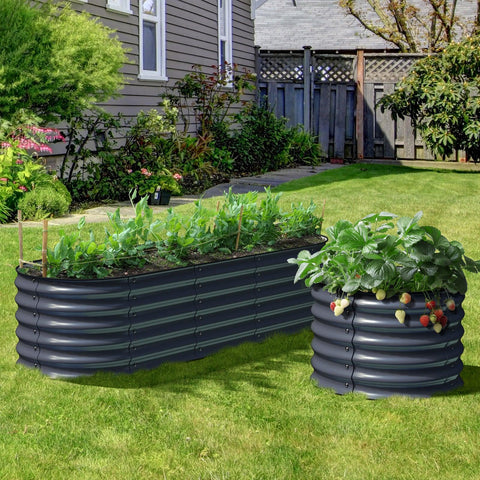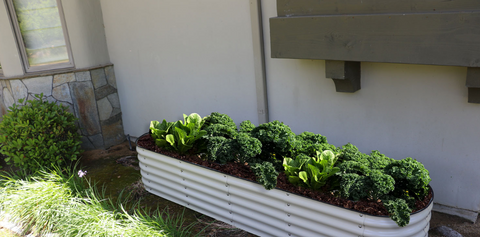Knowledge from Olle Garden Bed: 8 Kinds of Vegetables, More Than one Edible Part
Some of our favorite vegetables are vegetables with multiple edible parts. These vegetables bring you more benefits - not to mention your time and energy. Using some of these vegetables, you can use all parts of the plant without leaving any waste to throw away. Read on to find out which vegetables you can grow with multiple edible parts. The following content also has some reference value for raised garden beds.

Beet
Beets don't have to be grown just for the delicious red roots. You and the people you eat with can also enjoy delicious green vegetables.
These cool weather vegetables need plenty of sunlight, which means at least six hours of direct sunlight every day. They need loam that is always wet and well drained. When the pH value of soil is between 6.2 and 6.8, beet performs best.
Chayote
The bergamot has a big seed, which is a bit like a mango, although it is a pumpkin. The seeds and flesh are edible. The flesh is delicately sweet and tastes like cucumber; The seeds are hard and nuts. Even roots and leaves are edible.
Chayote is a warm weather vegetable that needs 150 frost free days to mature, so it grows best in USDA cold resistant zone 7 or higher. The plant likes plenty of sunlight (at least six hours of direct sunlight), but it can tolerate partial shadows, although your harvest may be affected. The chayote needs loose soil with good drainage.

Chicory
Chicory is famous for its edible roots, which produce a beverage similar to coffee when baked. However, the leaves and buds of plants are also edible.
Chicory needs a sunny place - six hours of direct sunlight every day. It works best in loose soils rich in organic matter, which are well drained.
A turnip
Most people know that they can eat turnip bulbs, cooked or raw. But did you know that leaves and stems can also be cooked and eaten?
Kohlrabi needs enough sunlight to thrive, which means six hours of direct sunlight every day. Plant it in fertile and fertile soil and keep it moist all the time. The soil of kohlrabi should be slightly acidic, with a pH value between 5.5 and 6.9.
Onion
Of course you know onion bulbs are edible, but do you know the green top is also edible? Just like you use the ground part of green onions, you can cut onion vegetables on baked potatoes, fried vegetables, peppers, etc.
You will find that onions fall into two categories: long day onions and short day onions. Although short day onions begin to produce bulbs when they get 12 hours of sunlight every day, long day onions do not produce bulbs until 15 to 16 hours. That's why gardeners in the northern states should plant long day onions, while gardeners in the southern states should plant short day onions.
Pumpkin
Pumpkin can surpass the Thanksgiving table if you just remember to use it as a big pumpkin in the kitchen. Of course, you can also make full use of your pumpkin by using seeds.
Your pumpkins will grow best in sufficient sunlight (at least six hours of direct sunlight a day), but plants can tolerate light colors. Pumpkin plants are widely used and can grow in almost any type of soil.
A turnip
You may already know that turnips are grown for bulbs, but their leaves are also edible. Older leaves can be tough, so harvest them when plants are young and they are still young. It tastes of mustard and pepper, with a bitter aftertaste. Those who do not like other members of the Brassica family (cabbage, Brussels sprouts, cauliflower, kale) do not like turnips.
Turnips need sufficient sunlight, at least six hours a day, to really thrive. However, they tolerate partial shadows. They need nutrient rich and well drained slightly acidic soil. The shooting pH is between 6.0 and 6.5.
Radish
The dark green leaves of radish are as delicious as their roots. Harvest, store, and use in recipes as you would any green leafy vegetable beet green, kale, kale, mustard, and Swiss beet.
Radishes really thrive in sufficient sunlight, with about six hours of direct sunlight every day. However, they can be grown in some shade. Planted in slightly acidic soil rich in organic matter to provide adequate drainage. The shooting pH is between 6.0 and 6.5.

Now you have learned something about these powerful things in the garden, which have multiple edible parts. The question is not which one you will add in the next planting, but how many.
